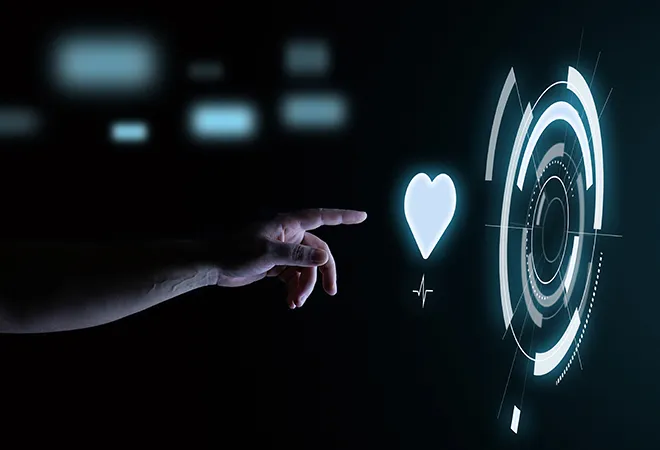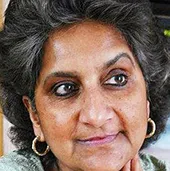
If necessity is the mother of invention, let’s add survival to it to grasp how technology is transforming healthcare in Africa and Asia. From addressing shortage of healthcare workers, to driving innovation, pruning systems of vested interests and discarding moribund western systems — both continents are poised to piggyback on technology.
Using technology to leapfrog ahead
Experts have argued that by 2030, the global demand for health workers will rise to 80 million, double the current number while the supply may not cross 65 million. This adversely affects low income countries seeking to achieve adequate growth in both demand and supply of expertise necessary to cover basic health services.
In countries such as Kenya and Rwanda — now experimenting with new access models — public demands rise fast. We know from Ghana, India and South Africa that these demands soon turn into irresistible political forces.
The healthcare systems in Africa and Asia are critically poised to leapfrog ahead with technology. Telemedicine and Artificial Intelligence (AI) are reducing the time necessary to get results, achieve the same or better results at the same or lower costs than traditional methods and accommodate expansion efficiently. Drones and other automated delivery systems bypass groaning infrastructure.
The American Hospital Association recently reported a telemedicine programme that saved 11% in costs and more than tripled ROI for investors. New technology benefits patient care quality — a new study published in the American Journal of Managed Care shows that telemedicine patients score lower for depression, anxiety and stress, and have 38% fewer hospital admissions.
Advantage Africa
If governments seize the opportunity, Africa is likely to avoid the worst of bad practices in the developed world — unnecessary visits to doctors and pharmacists, over prescription, needless testing for blood pressure and high doctor’s fees.
The World Economic Forum (WEF), the Boston Consulting Group (BCG) and many private and public sector stakeholders are looking at Africa’s tech-driven healthcare experiments with keen interest. Their principle interest is to see how these health systems can avoid the pitfalls experienced by developed countries.
If governments seize the opportunity, Africa is likely to avoid the worst of bad practices in the developed world — unnecessary visits to doctors and pharmacists, over prescription, needless testing for blood pressure and high doctor’s fees.
World Health Partners’ sustainable systems
Started in India, the World Health Partners (WHP) has moved into East Africa. With singular attention being paid to rural areas where the majority of the population lives, the WHP’s telemedicine programmes create a solution for each individual which is built around the human aspects of the user by factoring the medical, social, educational, religious and financial aspects of their own environment.
Their services offer remote diagnosis. Doctors in cities can connect, irrespective of where they are located, with village centres through special applications that are accessed via the internet. Browser-based algorithms simplify computer-aided differential diagnosis. Frequently used phrases are preloaded in the system allowing patients to quickly identify by pointing and clicking instead of writing. These instructions and comments print in the local language on the prescriptions issued for patients while they are stored in English in the electronic medical records.
These structures are robust enough to handle a range of services that address delivery costs and volumes essential to reducing the cost of delivery in addition to reaching out to remote communities.
Drone’s potential in healthcare
From disaster relief to transportation of medicine and vaccines, the transportation of blood and organs and surveillance of dangerous locations, the use of drones in the healthcare industry is myriad. While most studies detail a drone’s potential for addressing challenges in rural locations, it holds strengths in some densely populated locations too. The more drones communicate with each other, the more optimal their delivery paths will be.
Working with partners, the Geneva-based Global Alliance for Vaccines and Immunization (GAVI) has had success in partnering with technology companies to improve vaccine delivery. It is now focused on delivery of vaccines to children in remote locations. In addition to addressing vaccine delivery, drones identify those in need of vaccines, gather and analyse data in real time, expand the supply chain and improve demand.
From disaster relief to transportation of medicine and vaccines, the transportation of blood and organs and surveillance of dangerous locations, the use of drones in the healthcare industry is myriad.
Ghana has seen an extension of its medical drone network where GAVI hopes to make it the largest vaccine delivery network worldwide. The service will operate 24 hours a day, seven days a week from four distribution centres — each equipped with 30 drones — and deliver to over 2,000 health facilities serving 12 million people across the country.
“The ability of the government to supplement routine immunisation on demand will allow us to make sure that there will always be enough life-saving vaccines for every child in Ghana,” says Dr. Seth Berkley, CEO of GAVI.
The possibilities for drones in healthcare are limitless.
“Drones will be very helpful in future healthcare systems with to deliver organs of critical needs, defibrillators for emergency rescue missions, or a routine delivery of medical kits to rural patient areas with chronic diseases. Drones can be helpful delivering medical items to locations that are not easy to access,” says Professor Gino Limo Professor and Chair, Department of Industrial Engineering, University of Houston, USA.
He says it’s like a flying robot linked to people via a flying device and cloud computing responding to immediate medical requirements. According to him, if you are lying down on the grass just before you have a cardiac arrest, the robot recognises the condition.
The normalisation of drones in India is bringing change by raising new organ transportation possibilities. As policymakers discuss implementation and logistics, it is clear that drones save precious time and energy.
India’s notoriously busy cities have brought about challenges with the time-sensitive nature of organ transportation. A recent report released by Indian Society for Heart and Lung Transplantation (ISHLT) revealed disturbing data of mass wastage of donated organs. According to the report, over 867 organs including heart and lungs were wasted. Inability to get an organ to a recipient quickly is the main hurdle.
India’s notoriously busy cities have brought about challenges with the time-sensitive nature of organ transportation.
Drone ports in hospitals are under discussion. This requires the creation of special digital airspace and the registration of drones to transplant these organs. This is fundamental to the implementation of cutting edge technologies along with assessments of public safety and a need for health education to address apprehensions about drones. This learning can scale immediately across Africa.
AI in resource poor locations
Artificial Intelligence and blockchain-based projects are showing great promise. The prospect of artificial machine learning may lead to faster anonymous solutions for healthcare. CareAi, for example, is an AI-powered computing system that diagnoses infectious diseases such as malaria, typhoid and tuberculosis within seconds. The platform is engineered to serve the invisible demographic of migrants, ethnic minorities and those unregistered within traditional healthcare systems. This enables invisible cohorts to get access to basic healthcare providing vital contextual information without compromising their identities.
AI’s capabilities makes it useful in the detection of disease. It can detect lung cancer and provide diagnosis comparable to a CT scan, thus, making it an important tool in healthcare arsenal.
AI technology can also be implemented to make drone usage more effective. Other AI capabilities can include a simple diagnostic scan of patient’s health and remote two-way communications with health professionals on the spot in real time.
AI capabilities can detect lung cancer and provide diagnosis comparable to a CT scan, thus, making it an important tool in healthcare arsenal.
Call to action
The World Economic Forum (WEF) addressed the advances in a recent report called Health and Healthcare in the Fourth Industrial Revolution.
The advances of science and technology are outpacing existing care and payment models, regulatory structures, and other governance systems. The Fourth Industrial Revolution’s effects on the future of health and human well-being, and the implications on society need to be elevated and collectively examined in the public discourse.
The views expressed above belong to the author(s). ORF research and analyses now available on Telegram! Click here to access our curated content — blogs, longforms and interviews.




 PREV
PREV


